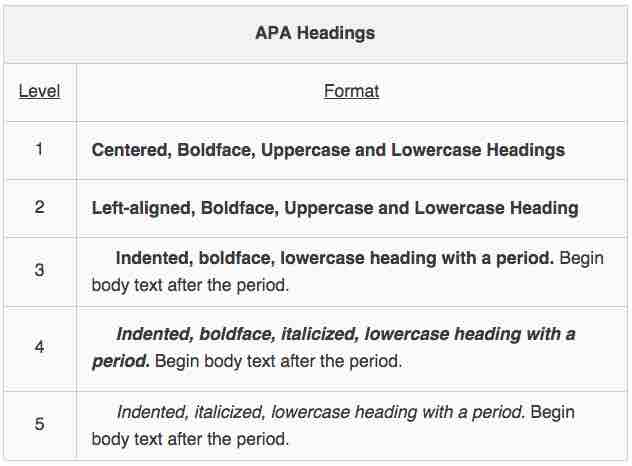In APA style, headings are used to organize your writing and give it a hierarchical organization. This is especially important in papers that present experimental research because they follow the particularly rigid structure of the scientific method.
APA style puts forth specific rules for formatting headings (up to five levels) within your paper:

APA heading hierarchy
These are the formatting rules for different levels of headings in APA style.
If a heading is said to be in title case, that means you should format it as though it were the title of a book, with the first letters of most major words capitalized (e.g., A Study of Color-Blindness in Dogs).
If a heading is said to be in sentence case, that means you should format it as though it were a normal sentence, with only the first letter of the first word (and of any proper nouns) capitalized (e.g., A study of color-blindness in dogs).
You should always use heading levels in this order, beginning with Level 1. So, if you have a paper with two levels of headings, you would use Level 1 formatting for the higher level and Level 2 formatting for the lower level. Similarly, if you have a paper with five levels of headings, you would use Level 1 formatting for the highest level and Level 5 formatting for the lowest level.
Your headings should not begin with section numbers (e.g., your Methods section should be titled simply “Methods”, not “2. Introduction”).
The introduction of the paper should not be titled “Introduction”; instead, the paper should simply begin with the title of the entire paper. Note that the “Abstract” title and the overall paper title do not actually count as headings, so they are simply centered and in title case, but not bolded as Level 1 headings would be. This means that the first heading you use in your introduction will follow Level 1 formatting, because it is the first and so at the highest level.